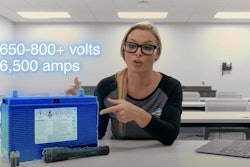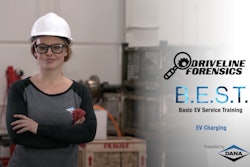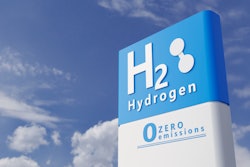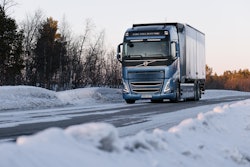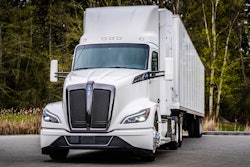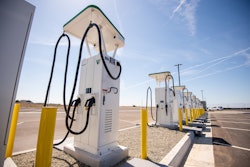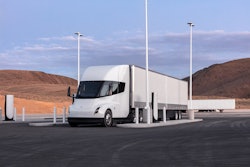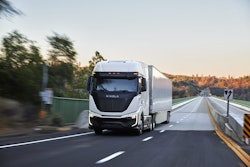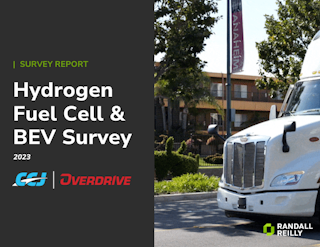The California Air Resources Board in April voted to finalize its Advanced Clean Fleets (ACF) rule, a huge set of regulations that requires all new medium- and heavy-duty vehicles sold or registered in the state to be zero-emission by 2036 and requires all trucks to be zero-emission by 2042.
Many see this as a de facto requirement that trucking fleets go battery electric, but I see a different potential outcome.
The internal combustion engine is not dead
I was first introduced to the concept of hydrogen as a power supply in an early science class.
The science teacher submerged two test tubes underwater in a tank, allowing them to fill with water. The submerged tubes were then mounted upside down to the side of the tank.
[Related: Kenworth fuel cell interest 'amazing' as hydrogen combustion also gains ground]
A wire, stripped of insulation for the length of the test tube, was inserted into each test tube and then attached to a battery.
Soon we saw bubbles forming on the bare copper: hydrogen on one and oxygen on the other.
For safety's sake, the teacher explained that hydrogen explodes more than it burns, and oxygen helps everything burn better.
Many years later I encountered a product based on the scientific principles I learned about in my youth. The idea was to separate water into its components: explosive hydrogen gas and oxygen. These gases were immediately injected into a compression ignition engine operating on diesel fuel. The intention was to achieve more power from hydrogen and reduce pollution through enhanced combustion with oxygen, both gases obtained by onboard electrolysis achieved through the i-Phi device they sell. One of the selling points was safety, as there were no significant quantities of compressed dangerous gases to protect against potential accidents.
[Related: Cummins, other hydrogen ICE proponents hoping for zero-emission status]
Now as I read about hydrogen fuel cells, I assume the dangers of tanks of hydrogen and oxygen have been minimized.
Why did this science experiment not catch on?
I have several theories. First, the concept was ahead of its time. While inventors liked the idea, engineers focused on perfecting the diesel engine and didn't have time to invest in something they hadn't invented. Mixing various combinations of gases for injection into diesel engines might have caught on if the demand for zero emissions had started long ago.
However, the biggest challenge came from competing inventors who proposed alternative approaches, such as injecting propane into diesel engines or running engines on compressed natural gas (CNG).
Hydrogen is more than just the fuel cell
At the Energy and Mobility Conference later this year, one of the topics scientists and engineers attending from the key sponsors of NASA, SAE and INCOSE need to discuss is taking an alchemist approach to experimenting with enhancements to burn hydrocarbons in the internal combustion engine, and explore various gas combinations with all the commercial enterprises attending and exhibiting at the conference.
Have we solved the safety issues of storing large quantities of compressed gases near fuel cells? I hope that comes out of the conference too. If so, can we utilize that technology to continue using diesel as a power source while achieving cleaner-burning hydrocarbons with no major expense or engine modifications?
How can onboard H2 be enhanced? I have some ideas.
One option is to leverage solar power and/or wind power. Instead of relying solely on the vehicle's alternator to generate electricity for breaking water into gases, we can consider alternative electrolysis power supply methods. For instance, we can deploy windmills or use solar panels to charge batteries when the vehicle is stationary. Why not use the principle of the turbocharger to generate power for onboard electrolysis? Instead of compressing air with wasted exhaust energy, a turbine wheel can generate electricity by turning an alternator.
The critical point is that these aspects are worth discussing before society prematurely declares that the diesel internal combustion engine is obsolete. To paraphrase Mark Twain's famous misquotation as I see it applying to the current discussion of diesel power: "The report of my death is an exaggeration."

